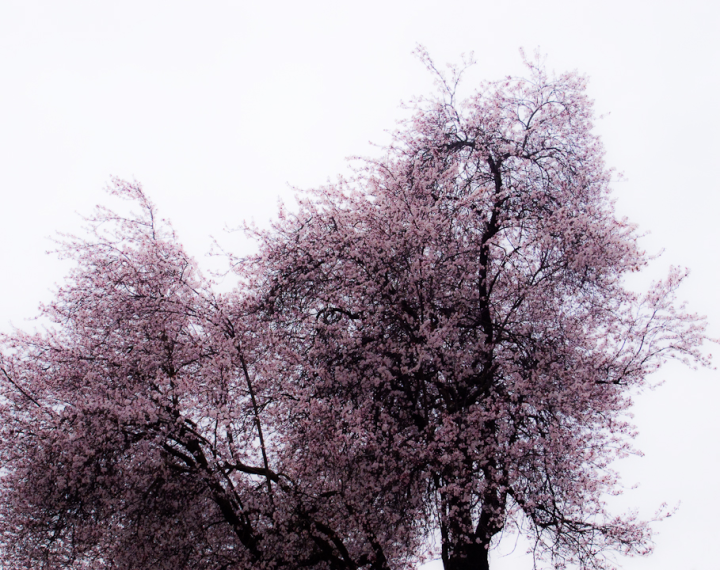
Assignment for Dailyshoot 100 on 2010/02/23: “Monochrome photos don't have to be the result of processing or desaturation. Find a monochrome composition and shoot it. ”
The assignment said MONOchrome but I'm a computer programmer and we're prone to off-by-one errors, so I claim this falls within the spirit of the thing. As I was lining up the picture, an elderly lady said: "Cherry blossoms in February!".

Comment feed for ongoing:
From: Alex Waterhouse-Hayward (Feb 24 2010, at 10:19)
Like most I had always thought that colour photography was preceded by b+w photography. A shock of wonderful surprise came to me in the middle 80s when I purchased a used edition of Photodiscovery - Masterworks of Photography 1840-1940 by Bruce Bernard. The book took advantage of the newer printing presses that could print in four colour. This meant that for the first time I was able to see many of the great photographs of the 19th and the first half of the 20th century by such masters as Talbot, Niepce, Brady, Atget, Cartier-Bresson and many others in their original rich monochrome tones. There are few real b+w prints in the mix. B+w was an invention of the 20th century when photographic paper manufacturers competed to produce neutral blacks and stark whites while still making warm-tone papers for landscape and portrait photographers.
Before the advent of scanners the only way of getting real blacks for reproduction in books and magazines was to print the negatives onto glossy paper. The 8x10 glossy became the standard for wresting a real black from a photograph. With scanners the surface of a photograph can be glossy, or matte and there will be no difference in that black when reproduced in a book or newspaper.
Many photographers of the 20th century (this one included) discovered the wonders of such papers as Agfa Portriga a “b+w” product that when immersed in hot and intensely strong selenium toner baths would magically split-tone. These photographs had sections that were warm while others would be cold. In fact these split-toned prints were multi-toned.
Alex Waterhouse-Hayward
[link]
From: Alex Waterhouse-Hayward (Feb 24 2010, at 11:39)
And here are a couple of examples of split toning on Agfa Portriga whis is alas no more.
http://alexwaterhousehayward.com/blog/2006/04/ubc-botanical-garden-and-russian_12.html
http://alexwaterhousehayward.com/blog/2006/04/ubc-botanical-garden-and-russian_12.html
Alex Waterhouse-Hayward
[link]